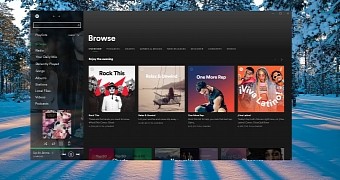If you’ve been keeping an eye on everything Microsoft lately, you certainly noticed that the number of concepts imagining various Windows features or updates has increased significantly.
No matter if they are concepts envisioning how Fluent Design could change the way Windows looks, how a modern version of Windows 7 would run today, or how Windows XP can live side by side with Windows 10, all these ideas are quickly gaining the attention of users worldwide.
While it’s not hard to figure out why this happens, it’s more important to note that some of these concepts are created by skilled designers who until one point manage to do things even better than Microsoft. Certainly, there’s a good reason why this happens.
All these designers are using feedback that Windows users post online, so their concepts aren’t necessarily based on a vision for the future or a specific schedule, but exactly on what others want in the operating system.
Microsoft, on the other hand, has rarely seemed interested in such concepts no matter how popular they’ve been. The company obviously remained tight-lipped on these ideas because any word it’d say could be a hint at a possible change in its products, and as it learned the hard way, promising certain updates and then giving up on them isn’t quite the best way to go.
And yet, there’s no doubt that Windows engineers and designers are aware of the existence of these concepts. Most of them use sites like reddit or Behance anyway, so coming across a new Windows concept is quite easy. But there’s a different question that’s more important for everyone: are these concepts useful to Microsoft in any way?
The answer, I think, is yes. But not in the way you’d expect them to be. The more coverage a certain concept gets, the bigger the chances for Microsoft engineers to look into the ideas that it promotes. Microsoft employees are already monitoring most social sites, and they surely discover Windows concepts just like the rest of us.
But for a company in the position of Microsoft, all these concepts are nothing more than feedback. And just like any other piece of feedback, it may be implemented in Windows 10 at some point or it may not.
Microsoft has continuously requested feedback since it first launched Windows 10, and that’s also the purpose of the Windows Insider program. The Feedback Hub is full of suggestions and requests from users across the world, and every once in a while, some of these messages end up being part of a Windows release.
That’s exactly what happens with user concepts at well. These ideas are considered to be visual feedback but are treated no differently from the rest of the feedback. They do help Microsoft designers understand more precisely how users want a certain feature to look like, but on the other hand, it still needs to align with the product strategy and a series of other requirements in order to be developed.
The only concept idea that I can think off which ended up being part of Windows is a revamped File Explorer. A substantial number of users requested tab support and a dark theme, and after so many years of waiting, the company is now working on such functionality in Windows 10.
Redstone 5 is projected to be the update bringing tabs and a dark theme in File Explorer to users, again based on feedback collected as part of the Windows Insider program.
It’ll be interesting to see what other ideas detailed in user concepts would eventually make it to Windows at some point in the future, though it goes without saying that projects like Windows 7 2018 Edition have absolutely zero chances to even be considered within the company.

 14 DAY TRIAL //
14 DAY TRIAL // 
